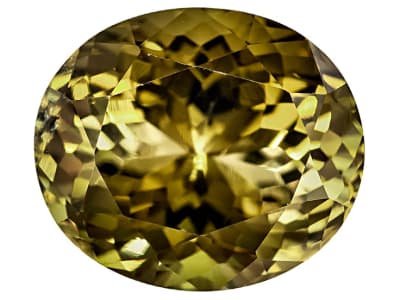Kornerupine comes in colors ranging from brown to beautiful emerald green to shades of yellow. It has distinctive trichroic pleochroism. Star material has been found in Mogok, Myanmar and is due to tiny rutile and graphite inclusions. Because of its extreme rarity, kornerupine is a highly sought-after collectors stone.
General Information
LWUV: Inert to strong yellow
Kornerupine Colors
-
 Black
Black -
 Blue
Blue -
 Brown
Brown -
 Colorless
Colorless -
 Green
Green -
 Green
Green -
 Green
Green -
 White
White -
 Yellow
Yellow
Kornerupine Spectra
We acknowledge the significant scientific contributions of John S Harris, FGA to the study of gemstone spectra and with deep appreciation to him, acknowledges the use of his images and related notes about gemstones and their spectra in the educational materials on this website.
Alternate Names
Prismatine
Countries of Origin
Tanzania, United Republic Of; Myanmar; Russian Federation; United States of America; Madagascar; Pakistan; Unknown; China; Brazil; Slovakia; France; Colombia; Sri Lanka; Zambia; Kenya; India; Canada; Norway; Finland; South Africa; Uganda; Zimbabwe; Antarctica; Australia; Greenland; Tajikistan
History
Kornerupine was discovered in Greenland and it was named for Danish geologist Andreas N. Kornerup in 1884. The largest stone ever found weighed 16.5cts and was mined in Sri Lanka.
Care
Normal, gentle handling. Avoid ultrasonic cleaners.
Optical Phenomena
Cat's-Eye Kornerupine
Cat’s-Eye Kornerupine can be found in India, Myanmar, and India. The chatoyancy is due to rutile and graphite inclusions. The largest stone reported was over 7 carats.
Star Kornerupine
The first star kornerupine was found in Mogak, Burma in 1884. It has also been reported to have been found in the Taita Hills, Kenya and Sri Lanka. It is extremely rare and displays a 4-ray star.



